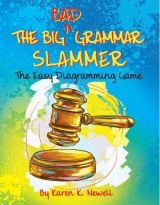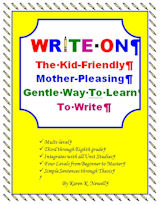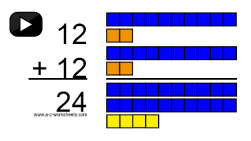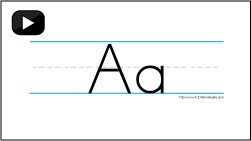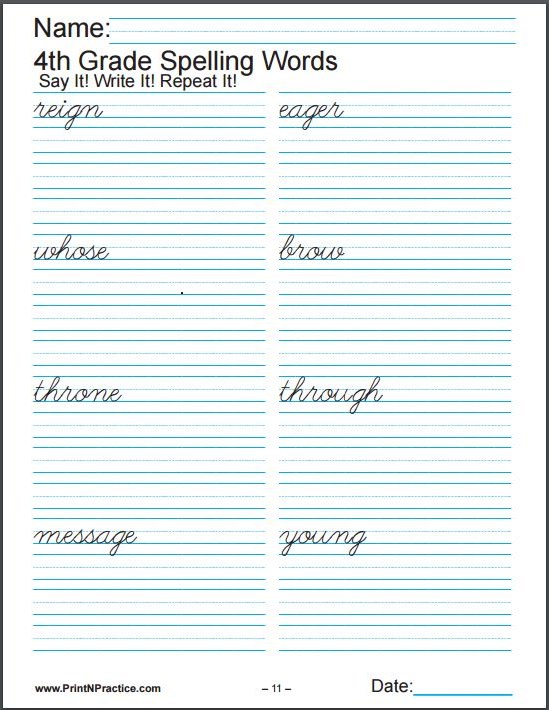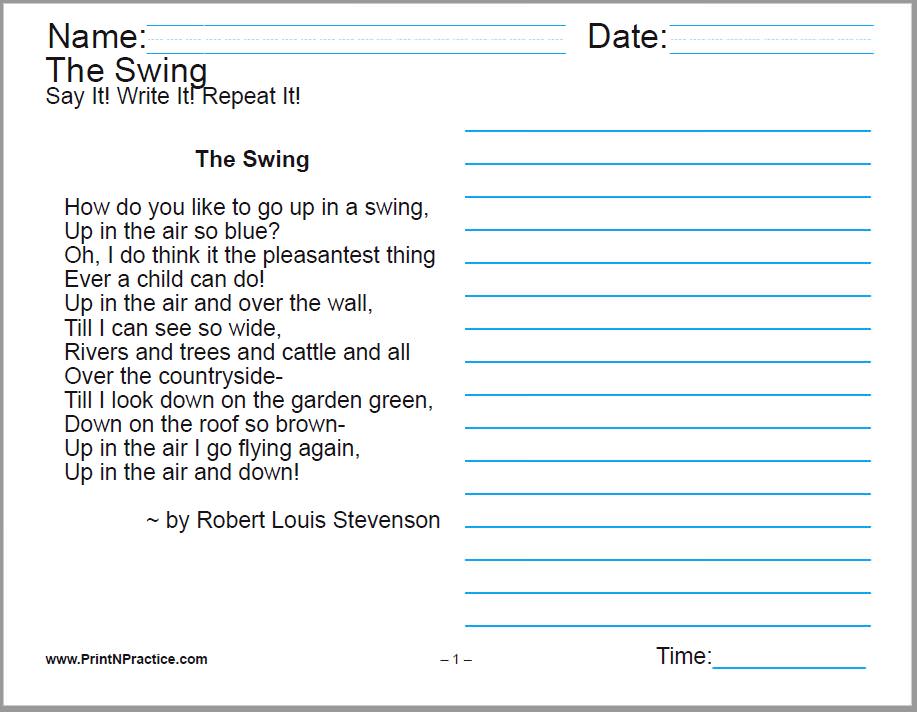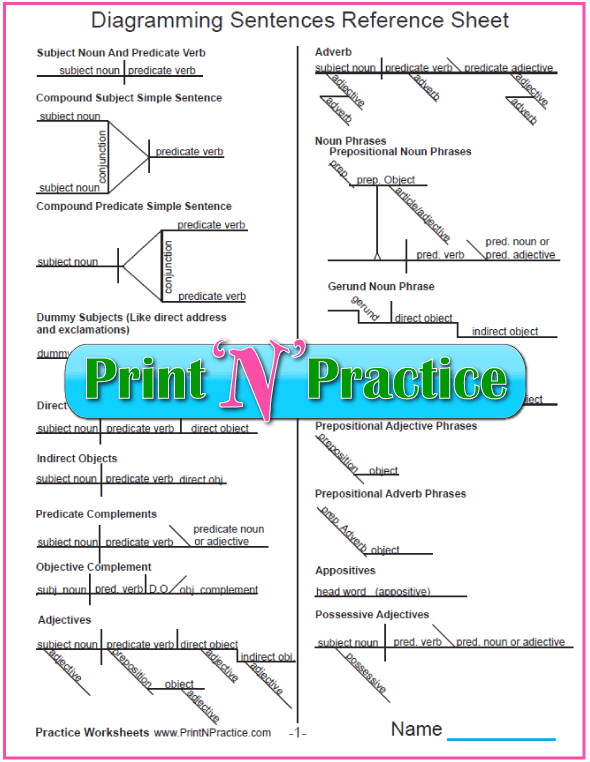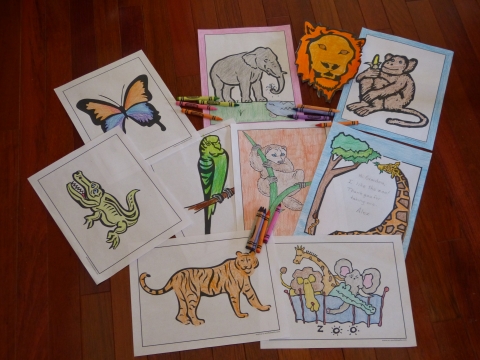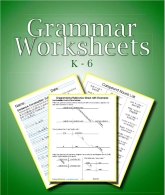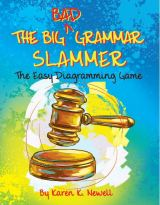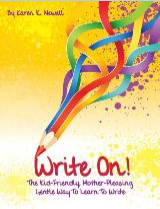Easy English Grammar Lessons
Grammar Slammer!
Truly, I haven't found a more easy English Grammar lessons program than Karen Newell's Grammar Slammer! I've taught English Grammar lessons for over fifteen years, and this is the best presentation I have ever used. My children like it, too, and now we are conversant with Grammar terms and diagramming!
You can download the Grammar Slammer instantly and print it from your own files or buy the hard copy binder ready for use.
Karen Newell is the CNA and homeschooling mother who has packed her experience of education and children into applying a hands-on approach to language arts programs. She explains here:
Hands-on learning provides a dynamic, interactive educational model that promotes student understanding of information. It is experiential, meaning the student experiences and uses the information in 3 dimensions.
Many subjects lend themselves well to hands-on learning. Science is explored through investigations. Math comprehension is enhanced with manipulatives and real-life word problems. History can be visited through field trips, reenactments, and even debates.
But how do you teach language arts through hands-on learning? Should English be a strictly textbook-based subject?
Your students will be happy to discover that you have tools to apply hands-on learning to language. This makes learning not only easier, but more fun.
Creative Writing
Think about writing. It is the hardest part of language and yet so important for continuing education. To some extent we can say it is naturally hands-on; the students have their hands on a pencil or a keyboard. But the process of writing can be so complex and abstract to young writers.
So we start the writing process with experience. Here's a simple writing assignment that I have used from youngest to oldest writers and always with benefit. Have the children go outside, watch an insect or bird for five minutes, then come back inside. Hand them a small index card and ask them to write three to five things that the creature did. They only need to write one to two words for each act. Voila! This becomes an outline for a descriptive essay. For each act of the insects adventure, the student writes a paragraph of several sentences. By using colorful adjectives and action verbs, an interesting paper can be written about the bees or grasshoppers in your yard.
There's a little more happening here than just a simple writing assignment. They used their own experience to form a descriptive essay. Great, but that's not all.
They now have the experience of writing a descriptive essay. If they repeat the process of writing descriptive essays based on experience several times, they will become an experienced writer of descriptive essays. They will then be able to use descriptive writing for more abstract concepts. Write On: The Kid Friendly, Mother Pleasing, Gentle Way to Learn To Write is like a cook-book of writing experiences to unlock the writer in every child.
Easy English Grammar Lessons
Hands-on learning can also be used with the most dreaded part of language for many students: grammar. You may be surprised to find that one way of teaching hands-on grammar has been with us all along. It was used in previous generations - when correct grammar was expected. It fell out of vogue, but is making a popular return.
What method is this? Diagramming sentences.
I can hear the moans and boos from some quarters already. But hear me out. I'm not talking about asking a student to diagram a sentence and then marking their paper up and their grade down for every little mistake.
Think about the purpose of grammar: to understand the parts of speech. I want students to be able to use the complex parts of speech to write strong sentences. By the time they were four or five years old they moved from speaking simple sentences to complex sentences. But we often find middle school and high school students writing simple sentences, because they do not know how to use the parts of speech as writing tools.
Here's where easy English Grammar diagramming can help. The first part of the diagram is to demonstrate the main part of the sentence. All those other parts (participial phrases, adverbial clauses, etc.) support the main part of the sentence to clarify meaning.
Students who can diagram, understand the relationship of the parts of speech to each other. They can then craft their own complex sentences.
I don't know about you, but I don't think most people need to go through life identifying gerunds, infinitives, and indefinite pronouns. But they DO need to know how to use them correctly.
How does hands-on learning work for diagramming sentences? We give students clue cards that visually show the parts of speech, the standard diagram for each, and specific clues for identifying them. Students can SEE the relationship of the parts of speech.
Then they construct their own sentences using those parts of speech. They can fit their sentence on to the model diagram.
With The Big Bad Grammar Slammer, the students not only get the clue cards, they get a tutorial on the use of the parts of speech, and a diagramming game which altogether become easy English Grammar lessons.
Will your students WANT to play a diagramming game? Well, in a few minutes a week, they will review all the essential information they ever need to know on parts of speech and complex sentences. No more boos or groans. Just a simple review of all the parts of speech with a blank sheet of paper and the roll of dice maintains their grammar skills.
The Correct Spelling Of Words
Hands on learning can be applied to learning the correct spelling of words as well. Like writing and an easy English Grammar, spelling is innately hands-on. But with the simple spelling method we use with Syllable Savvy Spelling, every unknown word becomes a spelling word to master.
First, divide a new word into syllables. The student writes the words in the syllables as they say the word in their head or out loud.
Second, count how many letters are in each syllable. The student has to check and see that each letter of each syllable is correct. If they got all the letters in a particular syllable correct, they right down the correct number.
If they got it wrong, they simply have to re-write the word.
Literature
Literature is another traditionally book-oriented subject that can also be addressed with hands-on learning.
Teachers often start by having the student read an assigned book. But hold on, aren't we missing something?
As homeschoolers, we can start by having the student choose a book of their choice from the annals of classic literature. Want to make it simple? Bring home three or four classic books and let them choose after reading the covers. Ask them to identify what about the story appealed to them.
Now it's time to read the book. Variety can be used here. Students can read silently, you can read it to them, they can read it to you, or take turns paragraph by paragraph.
Have the students identify the elements of literature within the story. If they like the book, elements of literature spring to life. If they don't like the book, they now have two distasteful topics: a disliked book and these abstract elements.
What can they do with the literary elements once they discover them? Posters, art work, essays, plays (acted or written) - the sky is the limit.
With most of the books on classic literature, this can be taken one step further. They can apply the elements they have described from the book to their own life or society in general. This may require the use of inductive and deductive reasoning.
We have gone from a good story they enjoyed, to the analysis of literary elements, to the philosophy of life. And it was fun!
Grammar Slammer by Karen Newell
I've used many English Grammar lessons hoping to find a straight forward way to teach my students how to make sense of sentence diagramming. Our own charts are the first I've ever seen that are easily available with the names of the English parts of speech on the diagram and they have been a God-send; but when it comes to making an orderly process that is explained well with an enjoyable format, Karen Newell has developed an easy English Grammar that beats the many others that I have used.
- Click here to see her Grammar Slammer! The best grammar book I've used to teach diagramming sentences!
- Click here to get her Grammar Slammer Soft Bound book.

Mary Fifer, BSBA is webmaster, author, and researcher at PrintNPractice.com. She has created elementary school practice exercises using printable or digital interactive worksheets. Perfect for today's teachers, tutors, homeschoolers, and students!
